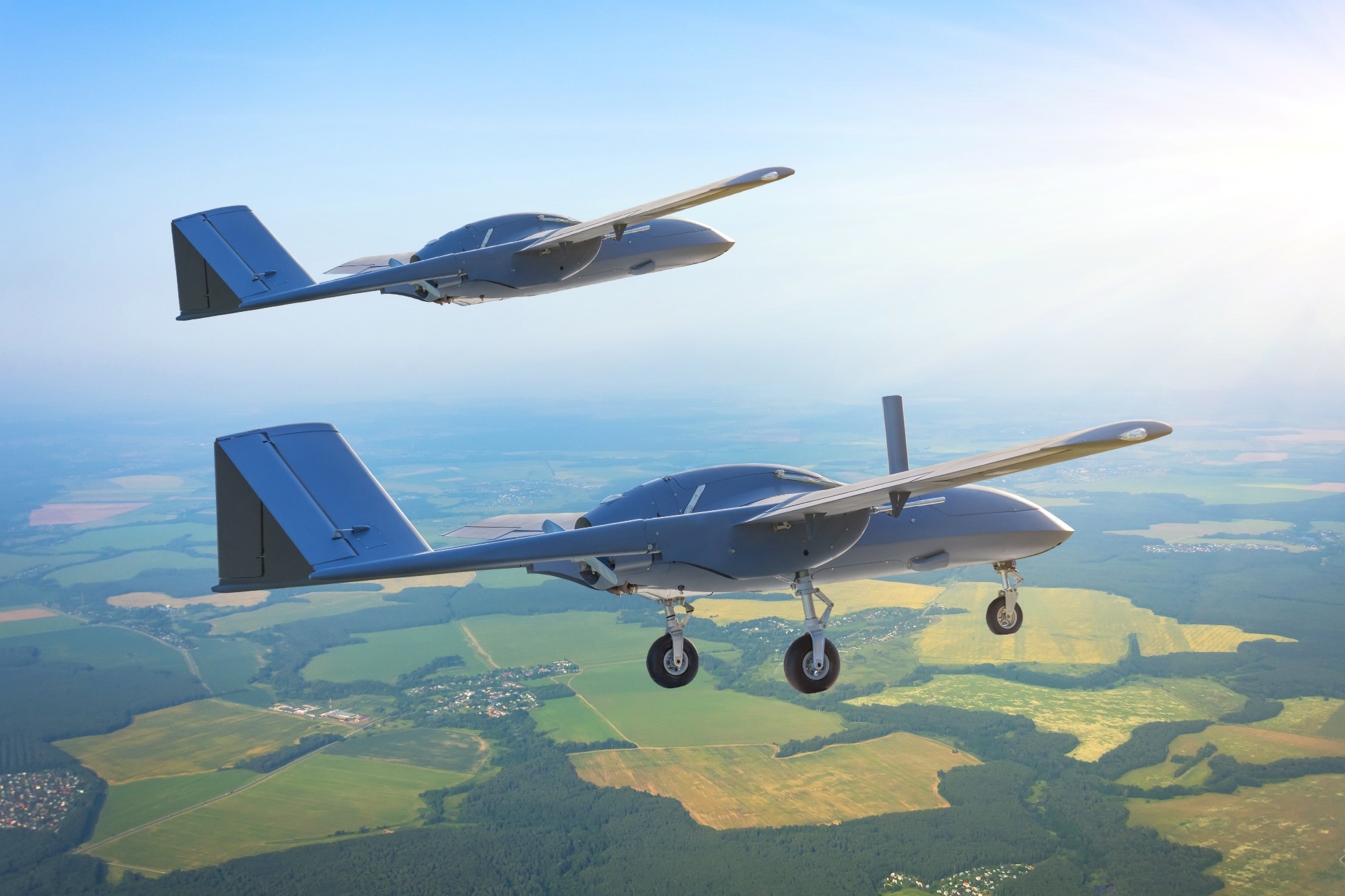In an article published in the journal Scientific Reports, researchers proposed a quick response (QR) code double camouflage encryption algorithm to effectively ensure the information security of the unmanned aerial vehicle (UAV) landing area.
 Study: Double Camouflage Encryption of QR Codes for Secure UAV Landing. Image credit: aappp/Shutterstock
Study: Double Camouflage Encryption of QR Codes for Secure UAV Landing. Image credit: aappp/Shutterstock
Background
The landing area sign image selection plays a crucial role in the field of UAV landing. QR code, which belongs to matrix two-dimensional (2D) barcode, is a square array comprising a coding area and functional graphics, including image finding graphics, correction graphics, positioning graphics, and delimiters.
QR codes are primarily used in drone landing areas as they possess multi-angle high-speed recognition, strong fault tolerance, and high data storage capacity. However, the landing point identification image can be cracked by eavesdropping drones to occupy the correct receiver’s landing area. Thus, ensuring the UAV landing area information security and preventing the area from being occupied by other/enemy users is crucial.
The proposed approach
In this study, researchers proposed a UAV landing scenario-based double camouflage encryption mechanism of QR code. In this mechanism, the carrier image and private key are utilized to complete the double camouflage encryption, and the public key is then modulated based on the ghost imaging principle for obtaining the ciphertext.
The receiver initially decrypts the camouflage image using the public key after receiving the ciphertext and then decrypts the QR code image using the private key. The ciphertext information is received by the UAV through the detector. Thus, non-users cannot decrypt the correct QR code image using the error key. Additionally, the eavesdroppers/enemy users can decrypt only the camouflage image and cannot occupy the landing area even when they obtain the public key information. Users can decrypt the correct QR code image for landing only after using the double private and public keys.
The encryption and decryption mechanisms
In the encryption stage, considering the QR code image as the original target/image to be encrypted, the sequential coding principle was applied to encode the encrypted image. Every pixel position before sequential coding was designated as the index matrix/private key 1 to achieve the first-level encryption.
The carrier image was then selected, and the first-level encrypted image was hidden into the carrier image based on the SURF matching principle/private key 2 for obtaining the camouflage image to realize the camouflage encryption. Subsequently, the camouflage image was modulated using the preset Hadamard matrix modulation mode/public key based on the ghost imaging algorithm to obtain the ciphertext.
In the decryption stage, the ciphertext image information was received by the UAV through the detector. Users could first decrypt the camouflage image using the public key, and then the carrier image and the first-level encrypted image using the private key 2. Eventually, the users could decrypt the first-level encrypted image/perform the final decryption using the private key 1 to obtain the correct QR code image for landing.
Performance evaluation
Researchers simulated the QR code image under various sampling rates to analyze the proposed algorithm based on the feasibility and anti-noise attack performance. The peak signal-to-noise ratio (PSNR) was used as the feasibility analysis index, while the anti-noise attack performance was verified using two evaluation indexes, including bit error rate (BER) and structural similarity.
Researchers analyzed and compared the decrypted images’ PSNR values obtained using the proposed double camouflage encryption algorithm and QR code-based ghost imaging encryption algorithm. The PSNR values of the reconstructed image decrypted using the proposed double camouflage and ghost imaging encryption algorithms at 35% sampling rate were 10.4794 and 8.3029, respectively.
Similarly, the PSNR values of the reconstructed image decrypted using the proposed encryption algorithm and ghost imaging encryption algorithm at 75% sampling rate were 17.0879 and 12.5943, respectively. These findings demonstrated that the decrypted images obtained using the conventional ghost imaging algorithm had a lower resolution compared to the proposed double camouflage encryption algorithm.
In the noise-attack experiments, the results demonstrated that the BER value progressively becomes smaller and the structural similarity becomes larger with the increasing sampling rate, which resulted in an ever-improving decrypted image quality, with the decrypted image matching more closely to the ideal image.
Moreover, the decryption imaging based on the encryption scheme proposed in this study could ensure a small enough BER value even under several external noise attacks with specific intensities, indicating the proposed algorithms' good anti-noise attack ability.
The decryption effect of landing area QR code image information was compared based on the decryption by real users, ordinary users, and enemy users. The results indicated that the proposed mechanism could ensure that only real users could effectively obtain the correct QR code image after receiving the ciphertext information and land on the landing area while successfully preventing ordinary/enemy users from occupying the landing area.